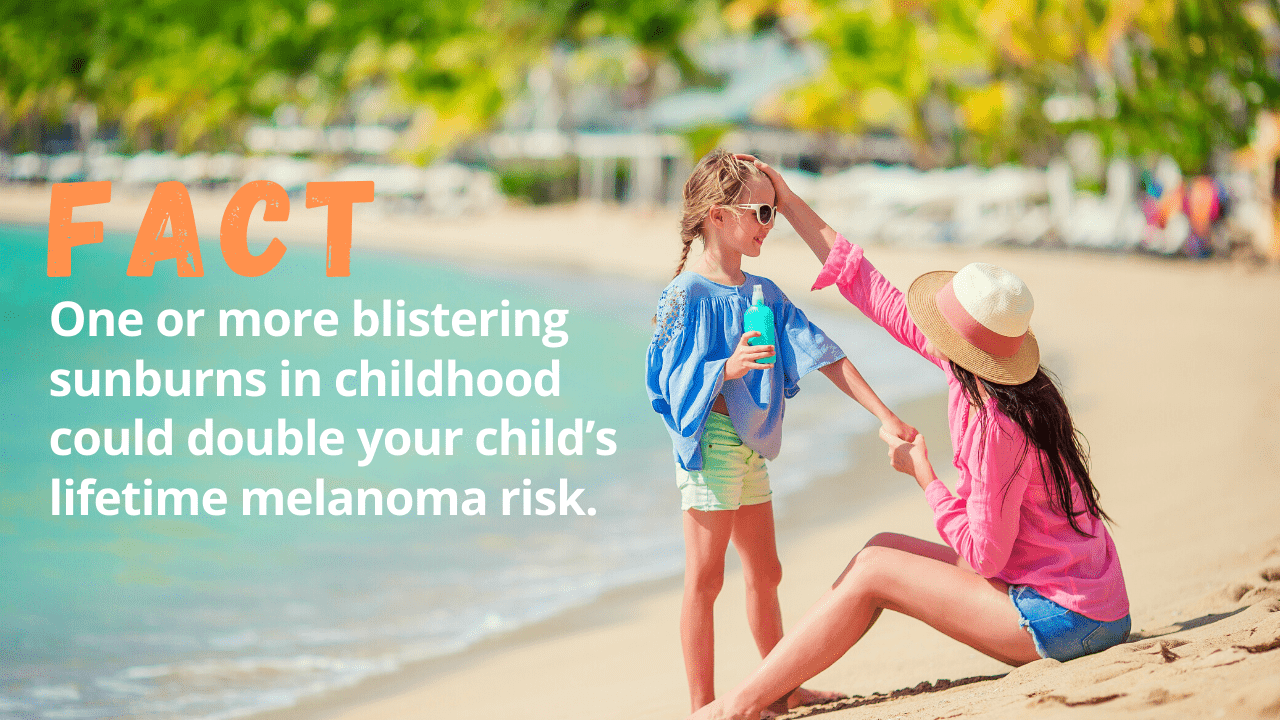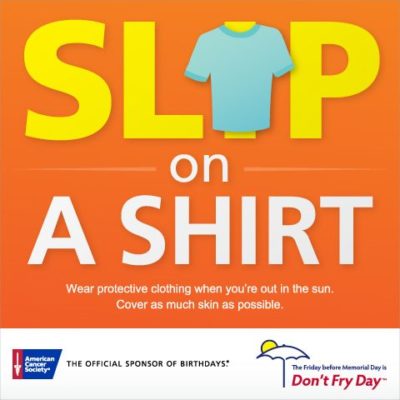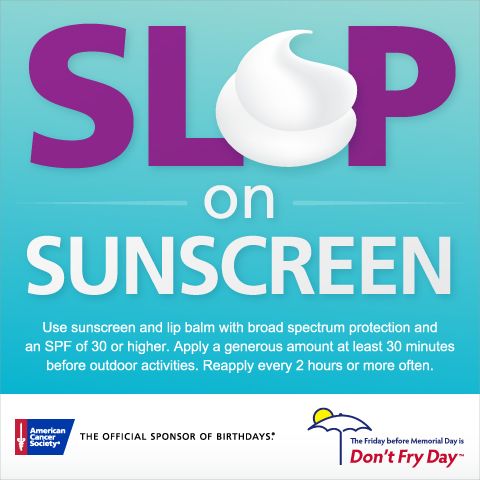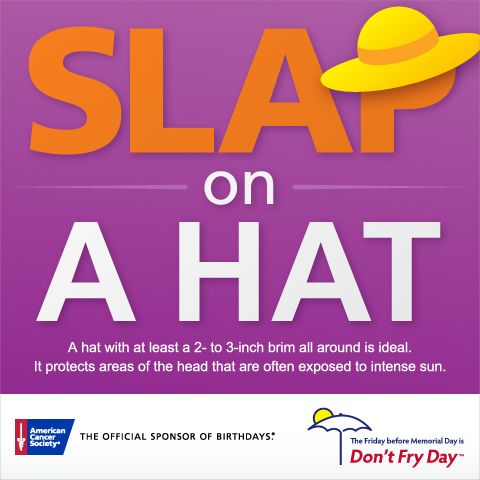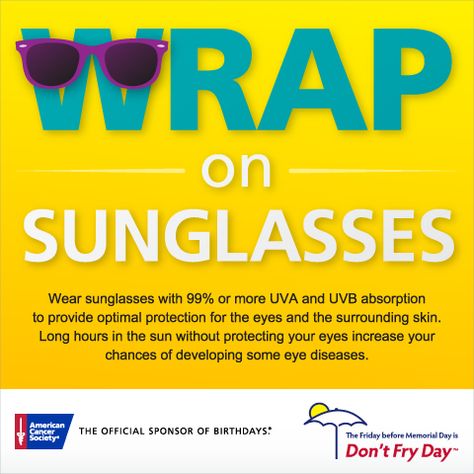Protecting Your Skin
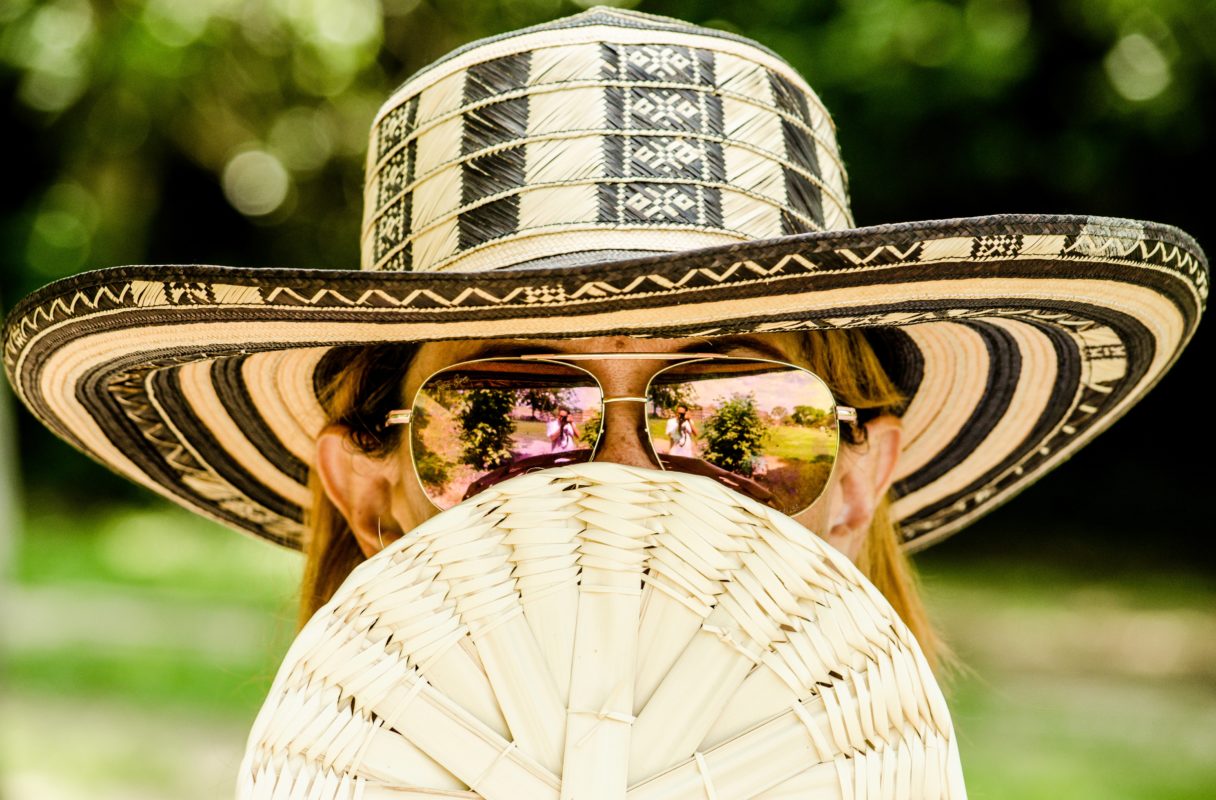
How Can I Protect My Skin?
The best way to reduce your risk of melanoma is to protect your skin from the sun and other sources of ultraviolet rays. Depending on the fairness of your skin and the UV index reading, the sun’s ultraviolet (UV) rays can damage your skin in as little as five minutes—and that damage is what may later develop into melanoma and other skin cancers. Sun protection is essential to melanoma prevention because exposure to ultraviolet (UV) radiation is a major risk factor for melanoma and other skin cancers, such as basal cell carcinoma and squamous cell carcinoma. People of all skin tones can develop melanoma and need to protect their skin from UV radiation.
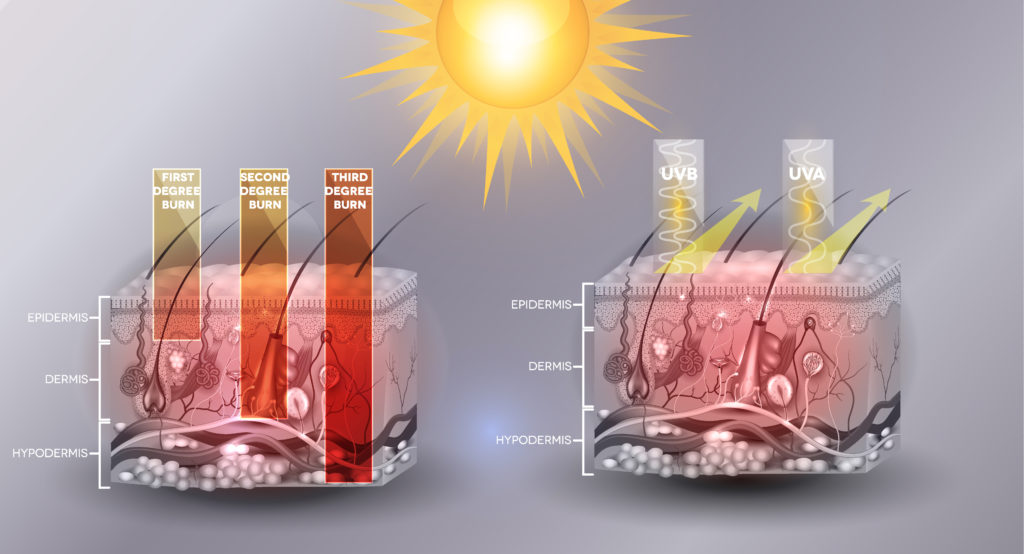
Protecting Your Skin From The Sun
Avoid the mid-day sun. The sun’s UV rays are the strongest between 10am and 4pm. To the extent possible, limit exposure to the sun during these hours. You can also protect your skin by seeking shade.
Wear broad-spectrum sunscreen of SPF 30 or higher. Broad-spectrum sunscreen gives you protection from both UVB and UVA rays. Check the sunscreen’s expiration date. Sunscreen without an expiration date listed has shelf life of no more than three years and less if it’s been exposed to excessive heat or direct sun. Your sunscreen may be old if it changes color from white to yellow, changes in consistency, or starts to separate.
Apply sunscreen generously. Most people only apply 25 to 50 percent of the recommended amount of sunscreen. Unless you slather on a thick layer, you’re not getting full protection. One ounce (about a shot glass full) is required to cover your whole body. And remember: Chemical sunscreens need time to be absorbed into the skin to work, so they need to be applied about 15 minutes before going in the sun.
Reapply sunscreen often. Many sunscreens lose their efficacy after two hours. And all sunscreens, even the longer-acting ones, should be reapplied after swimming, sweating, or toweling.
Cover those tricky spots. Don’t forget tricky spots like your scalp, the tops of your ears, the back of your neck, and the tops of your feet. Cover these spots with clothing or apply sunscreen. Apply sunscreen to the underside of your chin, which can burn via reflection of the sun’s rays off surfaces such as snow, sand, and concrete.
Wear sunscreen every day, regardless of the weather report. Damaging UV rays can be strong even on overcast days, so use sun protection every day. Protecting yourself from the sun’s rays is important whenever you’re outside or even when you’re on long rides in the car, if you are sitting where the sun hits your skin.
Wear lip balm with SPF. Don’t forget to protect your lips, which are not immune to skin cancer. Apply a lip balm with SPF, and reapply it regularly.
Wear UV-blocking sunglasses (the bigger the better). Ideal sunglasses are labeled “UV absorption up to 400 nm” or “Meets ANSI UV requirements,” meaning that they block 99 to 100% of UVA and UVB rays. Not only can UV rays burn the important structures in your eye, UV rays can also contribute to the formation of cataracts, which can affect vision later in life.
Wear protective clothing and broad-brimmed hats.
Your clothes can provide great protection from the sun. Darker colored clothing is usually more protective than lighter colored, and a dry shirt is more protective than a wet one. Look for clothing that has a UPF rating. While SPF stands for Sun Protection Factor and measures how long your sunscreen will protect you from ultraviolet rays, UPF stands for Ultraviolet Protection Factor and indicates how much of the sun’s UV rays are absorbed by the fabric instead of your skin. For clothing that has a UPF rating, look for UPF of 30 and above. Many of these fabrics have special washing instructions to maintain their UPF, so be sure to follow these instructions to ensure your garments continue to offer their full protective value. Wearing a hat with a wide brim – one that is 2-3 inches all the way around – is a great way to protect your head. If you wear a baseball cap, don’t forget to put sunscreen on your ears and neck.
The American Cancer Society’s Sun Protection Message
“Slip! Slop! Slap!® and Wrap”
“Slip! Slop! Slap!® and Wrap.” To help you remember some of the basic sun safety tips, the American Cancer Society has adopted this simple message: “Slip! Slop! Slap!® and Wrap.” It’s short for “Slip on a shirt, slop on sunscreen, slap on a hat, and wrap on some sunglasses.”
Remember Your ABCDEs
Despite our best efforts to protect our skin from sun damage, we still may develop melanoma, so it’s important to be proactive about detecting a potential melanoma. AIM encourages you to regularly examine your skin from head to toe. Use the ABCDEs as a guide and look for moles or other spots on your skin that
- are Asymmetrically shaped
- have an uneven Border
- are multi-Colored
- have a Diameter larger than a pencil eraser
- have in any way recently Evolved, or changed
If you see any of the above, make an appointment with a healthcare provider who has experience with melanoma. And if you have any abnormal growth, or any bleeding, burning, itching, or nonhealing sore, see a dermatologist immediately.
It’s important to be familiar with your skin so that you can recognize a change in it. The earlier melanoma is detected, the more treatable it is.
Learn more about the ABCDEs of melanoma.

Don’t Forget Your Kids
And while you’re protecting your own skin, remember to do the same for your children. Start modeling sun protection behaviors for them while they are young, and it will become a part of their everyday routine. Children can start wearing sunscreen after 6 months of age, but they and you should always use the sun avoidance and clothing protection tips, noted above, at any age. Enlist their help in applying sunscreen, encourage sunglasses, and engage in sun protective activities.
